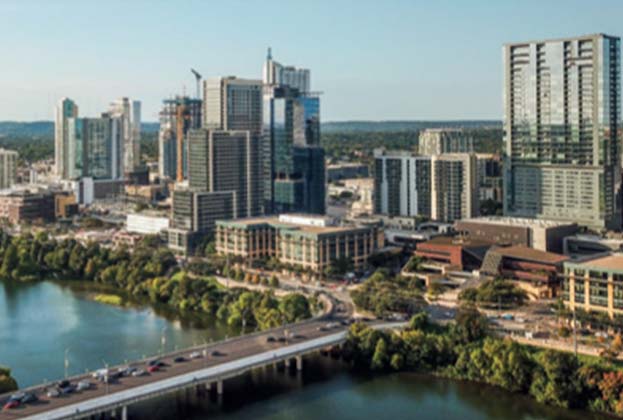How do developers reconcile the environmental impact of building homes with the societal need to house people? The key may lie in understanding and minimising a building’s embodied carbon
From the ground up
Carbon emissions start from ground-breaking on a site, and continue through manufacturing materials, transporting and assembling the building on-site. These emissions become the embodied carbon of the project and, unlike operational emissions, they cannot be mitigated at other points in the lifetime of a building.
Modern Methods of Construction (MMC) can help to reduce the carbon impact of construction. Approximately 20–30% of the materials in traditional new-build construction are wasted. With MMC, however, off-site construction and optimised production methods lower the waste to less than 1% of the total materials, drastically reducing the embodied carbon of a project. MMC is especially well suited to large operational residential projects such as apartment buildings, student housing and co-living schemes.
Setting the standard
Construction process emissions aren’t the only considerations for minimising the amount of carbon a building emits. The standard that a project is built to also plays a key role in reducing the operational carbon. Another consideration is building a structure that will be easy to repurpose to another use if needed. Retail or disused industrial facilities are asset types that are ripe for repurposing.
If a building can be sustainably refurbished or repurposed rather than demolished, then this will significantly lower end of life carbon emissions. Additionally, if a building can be dismantled and recycled then the initial embodied carbon will not be wasted and fewer new materials will be needed. However, new builds generally have far lower operational emissions, so it is the balance of whole life carbon which should be the deciding factor between repurposing and new build.
While there is a clear and present need for new housing stock, certain changes could be made to minimise the embodied carbon of these projects, with enormous potential to lessen the environmental impact of the built environment globally.
MMC
In Singapore, two 40-storey residential towers were built from nearly 1,900 prefabricated modules. The modules for Clement Canopy were 85% finished off-site and were assembled onsite. Developers say that they were able to reduce waste onsite by 70% and around 30% off-site through this method.
.jpg)
Singapore
Repurposing
In Annapolis, US, a 1960s-era mall has been repurposed into a village-within-a-city, with several hundred apartments, new stores, and office space, all now called the Annapolis Town Center. The development is one of the state’s transit-oriented projects, built around a station on the state’s commuter rail system, designed to encourage residents to give up their cars to commute into the city.
Read the articles within Spotlight: Global Living (Part 2) – 2021 below.
.jpg)


.jpg)